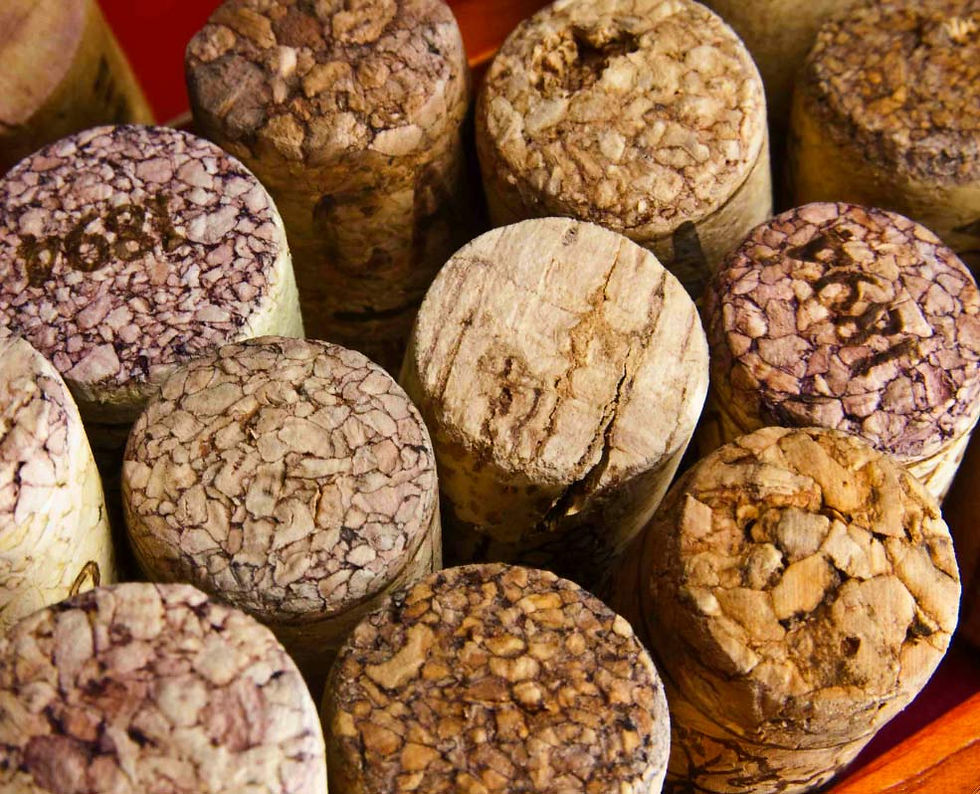Corks: Where do they come from?
- Danny Adler

- Jul 24, 2017
- 2 min read
Updated: Jun 3, 2020

The making of a great wine starts with the grapes, however the final product is just as important. Cork plays a big role in that. The corking process is an important factor in determining how the wine will age, and ultimately the quality of the wine itself. Without an proper corking process, the wine can't mature properly.
Before corks became popular, leather and cloth were used to seal bottles. Clay and sealing wax replaced these methods in order to better close bottles and prevent leakage. Glass was also a widely used method, but was expensive and harder to remove.
This production of corks changed the game for the wine industry. Corks allowed the perfect balance between the sealing and aging of wine. For one, corks are easier to remove than the previous methods. It also allows the proper oxidation of wine.
Cork material originates from a unique species of oak trees, most of which are found in Portugal. Once they reach the mature age of 25, the wood can be used to create corks. In Spain, the town of Palafrugell on the Costa Brava is known for its cork production. There is even a museum dedicated to the history of cork production in the area.
When wine comes in contact with air it oxidizes and changes the flavor. 1 milligram of oxygen is the appropriate amount of oxygen wine should be exposed to. Because of the pores in natural corks, wine is properly oxidized. However these pores allow for leakage and eventual erosion of the cork itself. This erosion is referred to as “cork taint” or “corked wine.” A fungus called TCA causes the eventual corrosion of the cork if the sealing is not done properly.

Alternative methods are becoming more popular in order to prevent this. A new trend is the use of screw tops instead of natural corks. Originally deemed an unauthentic and inexpensive alternative, many wineries are changing its’ reputation. Even the most prestigious vineyards are sealing their wines with screw-caps. Synthetic corks are another method that are made from plastics. However, synthetic corks and screw-tops do not allow the wine to be properly oxidized. Both of these methods are beneficial when for younger wines, and therefore to be consumed within three years.
For some people, the type of cork used defines the wine. Natural corks are often favored in the eyes of wine connoisseurs because of their authenticity. However, newer methods are proving that sometimes it's good to look beyond traditional practices.








Comments